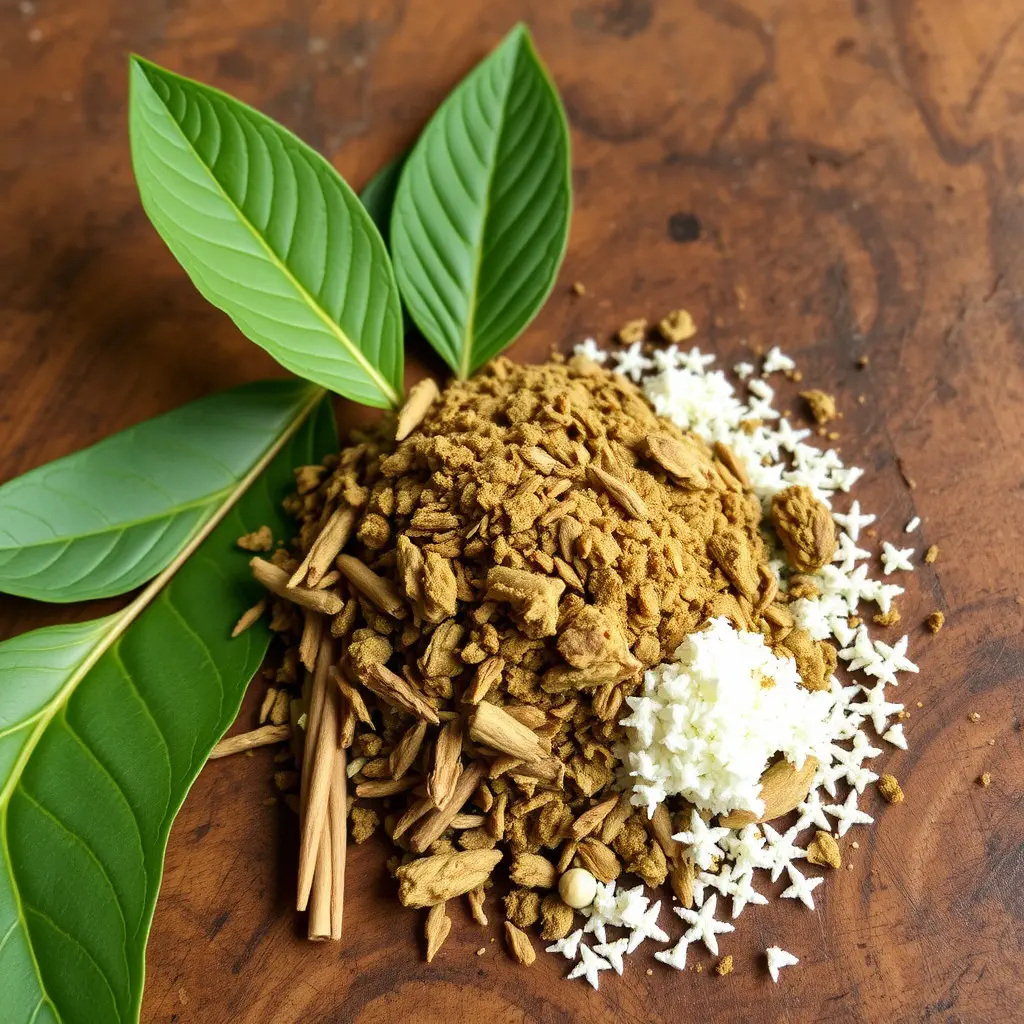Indiana has legislated the use and sale of kratom through the Indiana Kratom Consumer Protection Act, which sets standards for purity and labeling to ensure consumer safety while acknowledging its potential as a natural alternative for joint pain relief. The Act reflects the state's stance on balancing the health benefits of kratom with the need for responsible usage, underlining the importance of adhering to regulations that oversee its quality and legality. Kratom's active alkaloids, mitragynine and 7-hydroxymitragynine, engage with opioid receptors to provide analgesic effects, a mechanism that aligns with traditional Southeast Asian uses for pain relief. However, users in Indiana must be aware of the evolving legal landscape, as kratom's status is subject to change at both state and federal levels, including the influence of the 2018 Farm Bill on hemp-derived products. It is imperative for individuals to stay informed about the latest Indiana kratom law to use the substance safely and legally, consulting health professionals when integrating it into their pain management strategy and ensuring compliance with state regulations.
explore the potential of kratom as a natural remedy for joint pain relief, particularly within the framework set by the Indiana kratom law. This article delves into the science underpinning kratom’s analgesic effects and offers guidance on its legal use in Indiana. Understanding the intricacies of local legislation is crucial for those seeking safe and compliant options for joint pain management. Join us as we navigate the intersection of health, natural products, and regulation.
- Understanding Kratom's Role in Joint Pain Relief within the Context of Indiana Kratom Law
- The Science Behind Kratom and Its Analgesic Properties for Joint Pain Management
- Navigating Legal Use of Kratom for Joint Pain in Indiana: A User's Guide to Compliance and Safety
Understanding Kratom's Role in Joint Pain Relief within the Context of Indiana Kratom Law

Kratom, a plant from Southeast Asia, has garnered attention for its potential role in joint pain relief, particularly among residents of Indiana who may seek alternatives to traditional medications. The active compounds found in kratom leaves, mitragynine and 7-hydroxymitragynine, are believed to interact with the body’s opioid receptors, providing analgesic effects. This has led some individuals to explore kratom as a natural approach to managing joint pain, which is a common issue affecting people across various age groups and lifestyles.
However, it is crucial to understand the legal context within which kratom can be used in Indiana. The state legislature has taken a stance on kratom through the Indiana Kratom Consumer Protection Act, which regulates its sale and use while also acknowledging its potential health benefits. This act sets standards for purity, labeling, and marketing, ensuring that consumers have access to safe products. It is important for those considering kratom for joint pain relief in Indiana to stay informed about the evolving legal landscape. The Indiana Kratom Consumer Protection Act not only protects public health but also provides a framework for responsible use of kratom as a complementary therapy, provided it aligns with the stipulated guidelines and is used alongside medical advice when necessary.
The Science Behind Kratom and Its Analgesic Properties for Joint Pain Management

kratom’s efficacy in managing joint pain stems from its interaction with the body’s opioid receptors, a phenomenon that has garnered attention within scientific communities and among individuals seeking natural alternatives to prescription pain medications. The alkaloids present in kratom leaves, particularly mitragynine and 7-hydroxymitragynine, are believed to bind to these receptors, thereby modulating pain signals and providing relief. This mechanism is supported by research that has explored the plant’s traditional use in Southeast Asia for pain management. While the scientific community continues to investigate kratom’s pharmacological properties, users have reported significant reductions in joint pain, attributing this to kratom’s analgesic effects. It’s important to note the regulatory context surrounding kratom, as indicated by Indiana kratom law, which provides a framework for its use within the state. Users should be aware of the legal status of kratom in their area before incorporating it into their joint pain management strategy. The legislative stance in Indiana reflects a broader national discourse on the safe and responsible use of kratom, emphasizing the need for both scientific understanding and regulatory oversight to ensure public health and safety. As such, individuals interested in exploring kratom as a means to alleviate joint pain should do so with an informed approach, considering both the potential benefits and the legal considerations as outlined by Indiana’s kratom legislation.
Navigating Legal Use of Kratom for Joint Pain in Indiana: A User's Guide to Compliance and Safety

When considering the use of kratom for joint pain relief in Indiana, it is imperative to understand the legal landscape as defined by the state’s laws. As per Indiana kratom law, kratom is a legally available supplement, but its status is subject to change and can vary at both state and federal levels. Users must stay informed about the current regulations to ensure compliance with local statutes. The 2018 Farm Bill legalized hemp-derived products, including kratom, at the federal level, yet states like Indiana retain the authority to regulate these substances within their jurisdiction. Therefore, individuals seeking joint pain relief through kratom should verify the most current laws and regulations by consulting the Indiana State Department of Health or local legal advisories.
Safety is paramount when incorporating kratom into a health regimen. Indiana kratom law may dictate purchase restrictions, vendor licensing, and dosage guidelines that users must adhere to. Additionally, due to kratom’s effects on the body being similar to opioids, it is crucial for users to approach its use with caution. This includes starting with low doses to gauge personal sensitivity, avoiding combination with other sedatives or pain medications without medical supervision, and regularly monitoring overall health impacts. Users should also source kratom from reputable vendors to ensure product quality and safety. By staying informed on Indiana’s specific regulations and prioritizing safe usage practices, individuals can responsibly explore the potential of kratom as a natural alternative for joint pain relief.
In conclusion, kratom presents a complex yet intriguing option for those in Indiana seeking relief from joint pain, under the stipulations set forth by the state’s kratom legislation. The scientific evidence supporting its analgesic effects offers hope to many, but it is imperative to approach its use with caution and knowledge of local regulations. As outlined in this article, understanding the intricacies of the Indiana kratom law is crucial for safe and compliant usage. Prospective users should carefully weigh the potential benefits against the existing legal framework and consider consulting healthcare professionals before integrating kratom into their pain management strategies. With informed use and continued research, kratom may emerge as a valuable tool in the multifaceted approach to joint pain relief, particularly within the context of Indiana’s evolving legal landscape.






